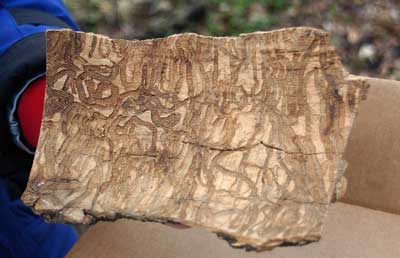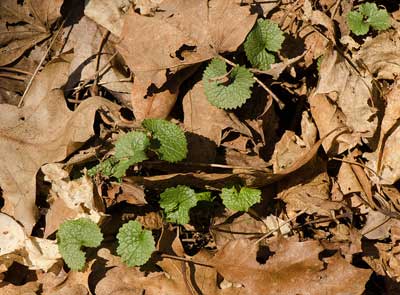Invasive Species
What are invasive species and how do I control them?
This content was originally published in our handbook for landowners, My Healthy Woods. Follow the link at the right to request a free copy.
Invasive species are unwanted plants or animals that can easily invade your woods, and outcompete and displace native species.
Over time, they can significantly change your land and reduce your forest’s health. For example, if tree seedlings can’t compete with invaders, what will this mean for the future of your woods?
What are invasive species?

Typically, invasive species are plants and animals that are not native to our region. They spread rapidly because no natural diseases or predators exist to keep their populations in check. In other words, they aren’t playing by the rules.
However, invasive species can also be native plants and animals whose populations have become overabundant because of past or current land use.
Ironwood, prickly ash, and whitetail deer are all examples of native species that may be locally abundant to the point of interfering with the health and functioning of forestland.
How do I know if I have invasive species?
Many different invasive species may be present in your woods now, and new ones are likely to arrive in coming years. Here, we profile the main types of invasive species, with a focus on specific plants, animals, and diseases that are having the greatest impacts in Wisconsin today.
- Non-woody plant: garlic mustard
- Small tree: buckthorn
- Shrub: honeysuckle
- Disease: oak wilt
- Animal: emerald ash borer
Early spring and late fall are the best times to walk your property – both on and off trail – to monitor for invasive plants. This is because many invasive plants green up early in spring or hold their leaves late into fall, which makes them stand out.

Invasive species are usually brought into new areas by people or wildlife, so make sure to check thoroughly along human and animal trails for invasive plants.
Will prescribed burning control invasive species?
Prescribed fire can definitely top-kill every plant on your property, but what this means is that only the above-ground portions of the plants are killed. Afterward, invasive species will likely re-sprout and gather enough energy to produce seed, usually within just a couple of years of burning.
Repeated fires, on the other hand, may effectively suppress an invasive plant; however, using a general management method to control a specific plant can place you in a bind. The need to control an invasive species now dictates how often you burn, which may conflict with other goals for your property.
This is why we recommend matching a specific control method to a specific invasive species whenever possible. Not only will this control that species better, but it will also let you apply burning in a way that serves the entire natural community you’re trying to manage.
Where can I get help?
Of course, other invasive species may be in your woods besides the five types we profile here. The Wisconsin Department of Natural Resources maintains a website on invasive plants and animals, including pictures and fact sheets that will help you identify invaders and learn how to control their spread.
To learn about the invasive species that are specific to your land, you can also work with a forester to walk your woods and prepare a management plan. And once you have a plan in place, various government financial assistance programs will share the cost with you of fighting invasive species on your property.
